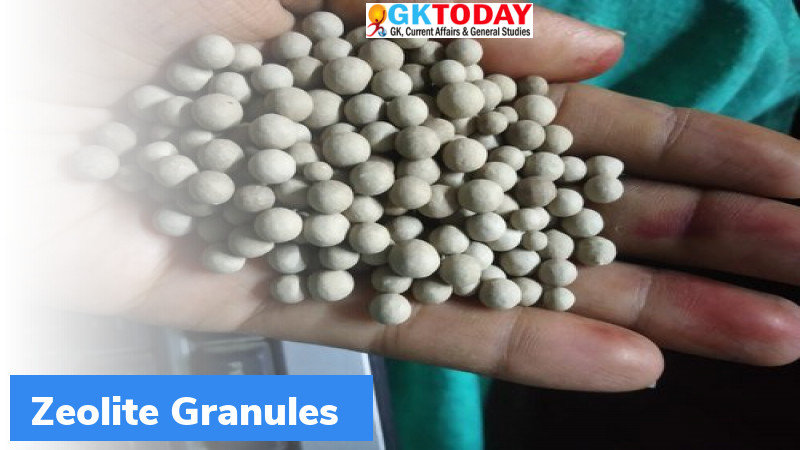What are Zeolites used in Oxygen Production?
The Air India recently airlifted 35 tonnes of Zeolite used in Oxygen Production plants from Rome to Bengaluru.
What are Zeolites?
- Zeolites are aluminosilicate minerals. They are microporous material that is used as adsorbents and catalysts.
- They can accommodate cations such as K+, Na+, Ca2+, Mg2+. When the zeolite minerals come in contact with a solution, they exchange these cations for other ions in the solution. The most common zeolite minerals are stilbite, phillipsite, natrolite, heulandite, chabzite, analcime.
Natural Zeolites
- The Zeolites are naturally formed when the volcanic rocks react with alkaline ground water.
- They also crystallize in marine basins for thousands to millions of years.
- The naturally occurring zeolites are contaminated with other minerals like quartz. They are rarely pure. For this reason, the naturally occurring Zeolites are excluded from commercial applications where purity is essential.
- The Zeolites transform into other minerals under hydrothermal alteration, weathering and metamorphic conditions. Weathering is breaking down of rocks through contact with water, atmospheric gases and biological organisms.
Artificial Zeolite
The zeolites are also produced by the process of slow crystallisation of silica-alumina gel.
Application
They are mainly used in commercial water purification. Also, they are used as sorbents and catalysts.
Zeolites in Oxygen Production
- Zeolites are used as adsorbent material in Pressure Swing Adsorption.
- An oxygen concentrator uses Zeolites to adsorb atmospheric nitrogen and then vents out the nitrogen. This leaves oxygen gas remaining to be used for patients.
- In high pressure, the surface area of zeolites increases and thus is capable of adsorbing large quantities of nitrogen.
Month: Current Affairs - May, 2021


